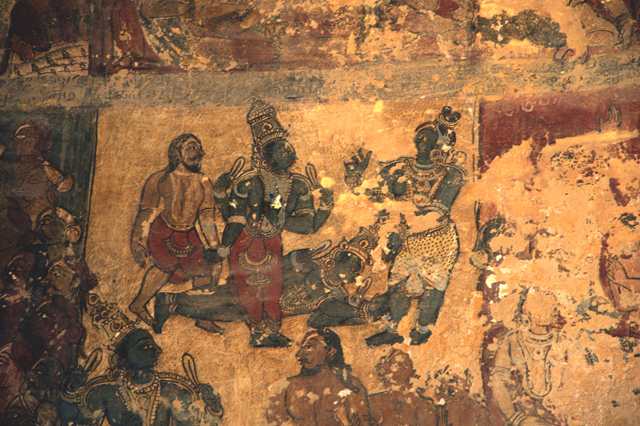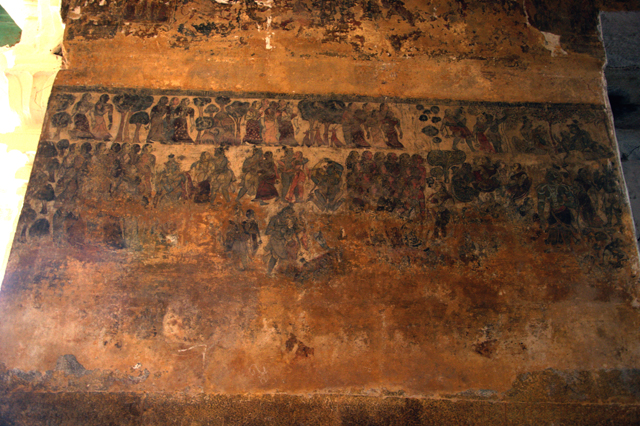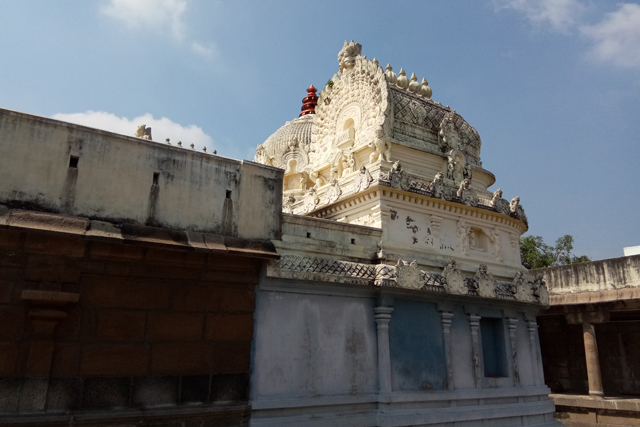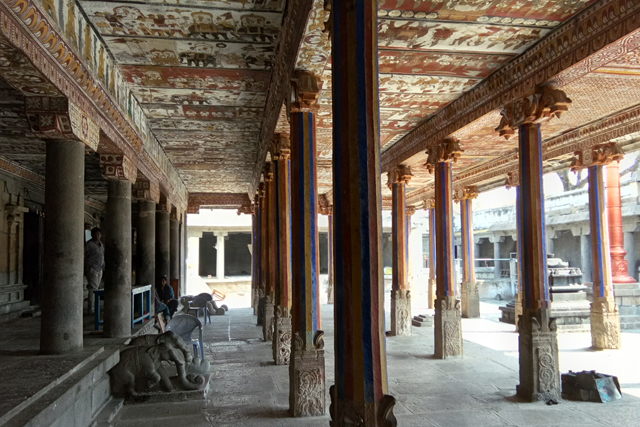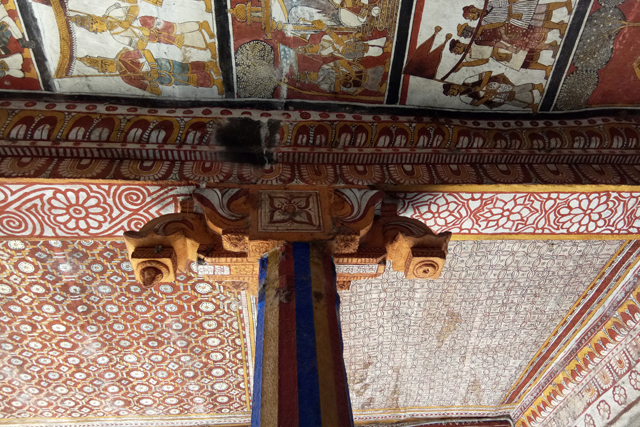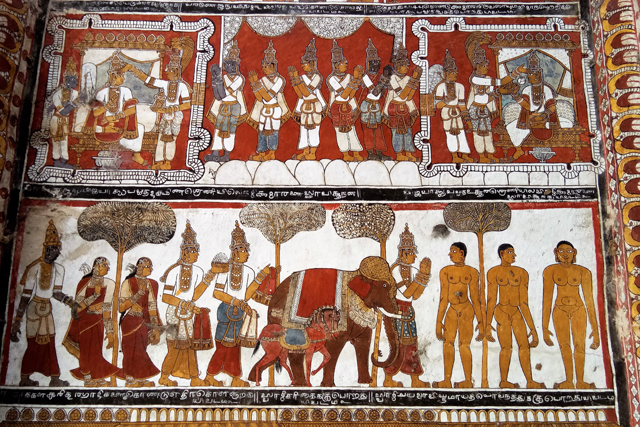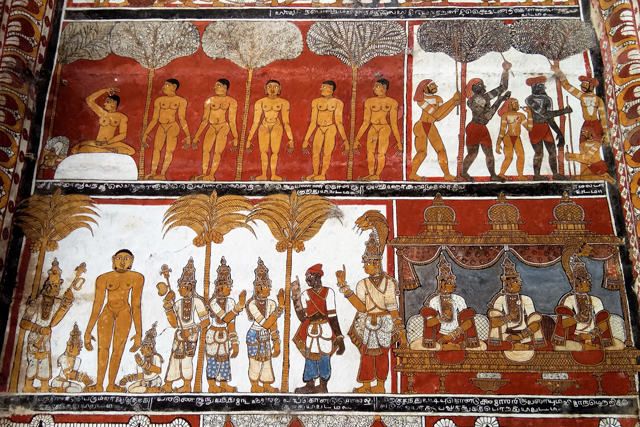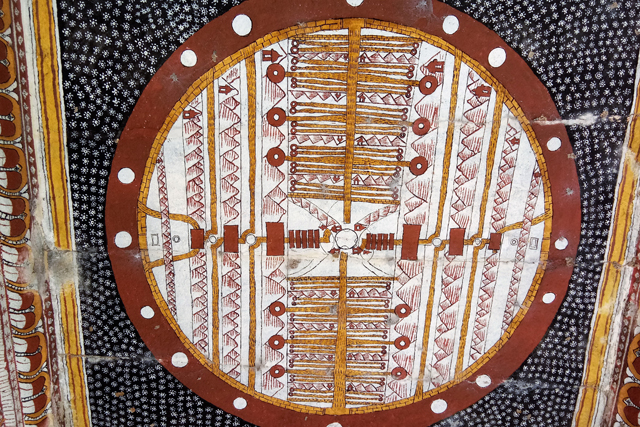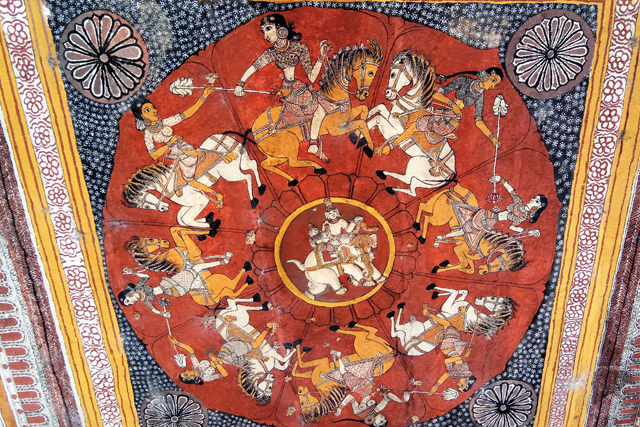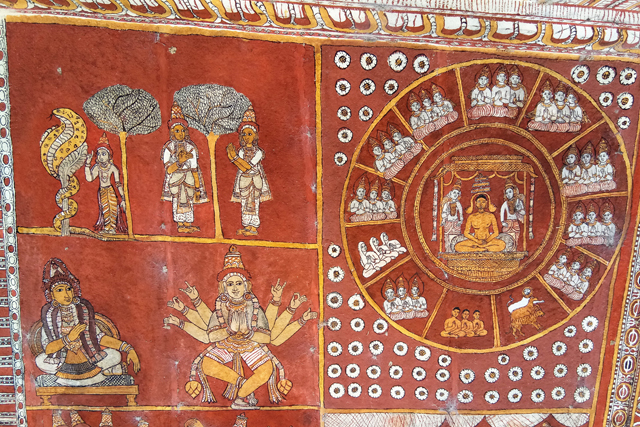A two-hour drive from Bengaluru on Hyderabad Highway drops you at a mysterious land surrounded by a cluster of dramatic hills and a vast semi-arid plateau of Andhra’s Anantapur District at the vicinity of the dried up Pennar River. A legend goes: this was where the blind Jatayu fell, wounded after a futile battle against Ravana, who was carrying away Sita. When Sri Ram reached the place, he saw the bird and said compassionately, “Le Pakshi” – “rise, bird”, in Telugu.


Keeping aside the legend, the tiny town of Leepakshi is however known for its 16th century Veerabhadra Temple, a grandeur in Vijayanagar art and architecture, and one of the finest monuments in the whole of South India. The temple is built on a tortoise shaped low hill called Kuruma Shaila.

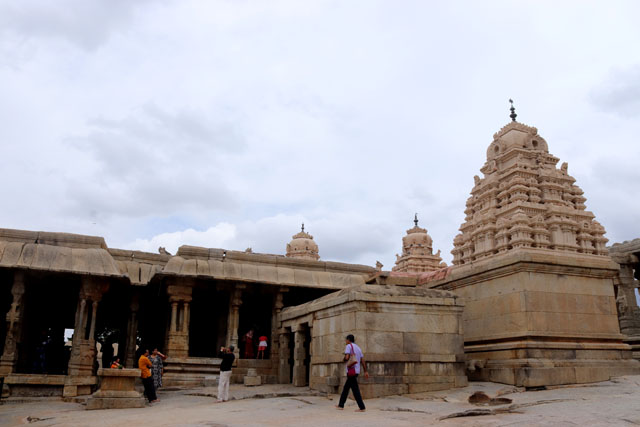
Veerabhadra, the fierce god created in his rage after the Daksha Yagna and the immolation of Parvati is the main deity here.
The construction of the temple of Veerabhadra is attributed to the initiative of two contemporary brothers, namely Veeranna and Virupanna at the provincial Vijayanagar Court of Penukonda. It is said that Virupanna was the officer in charge of the state treasury of the provincial government at Penukonda, administered by a governor appointed by Achyuta Deva Raya (1529 – 1547 CE), the Vijayanagar Emperor from Hampi.
Also, Read Here:
KANCHIPURAM MURALS – AN ARTISTIC SOJOURN




The Ruins of Penukonda – The Provincial Capital of Vijayanagar Empire
Penukonda or the Ghanagiri (as described in Vijayanagar inscriptions) was an important and influential province of the Vijayanagar Empire, and the rulers of Vijayanagar and Penukonda were also related through matrimonial alliances. The cult of Veerabhadra was quite popular during this period throughout the Vijayanagar Empire. He was the mascot, the war-cry and a source of inspiration for the Vijayanagar army. It is believed that both the brothers had a special affinity towards Lord Veerabhadra and had been inspired to build a temple at Leepakshi, which had been strongly linked with Puranic tradition.
Also, Read Here:
KAKATIYA DYNASTY – AN ARCHITECTURAL SOJOURN
The Veerabhadra Temple complex is a wonderful example of Vijayanagar architecture. Filled with gopuras, vimanas and sprawling courtyards the temple’s major architectural features are the ranga mantapa and ardha mantapa. Carved with an exquisite array of images of dancers, musicians and the Puranic deities, like those of Anantha Sayana, Dattatreya, Brahma, Tumburu, Narada and Rambha, the temple is however incomplete. The sprawling Kalyana – Mantapa meant as a sacred space for celebrating the wedding of Shiva with his beloved Girija has splendid and carved massive pillars, but there is no roof over them.







A major attraction of the temple is the ceiling murals depicting 14 aspects of Shiva, flanked by rishis whose gazes direct a viewer’s eyes to subsequent depictions from the killing of demon Andaka to Ardhanairswara, a figure whose body is composed of Shiva on the right side and Parvati on the left. There are also manifestations of Shiva as Kirata (boar hunter), Shiva’s wedding with Girija, scenes of Krishna’s childhood, and the legend Manu – Neeti – Cholan who disposed justice even to animals. There is also a scene of Viranna and Virupanna worshipping Shiva and Parvati in the company of other courtiers.
Travel Tips
Leepkshi is located at a distance of 120 km from Bengaluru off Hyderabad Highway in Anantapur District of Andhra Pradesh. The nearest town is Hindupur, which is 15 km away. It takes about 2 and half hours to reach Lepakshi from Bengaluru. There are both buses as well as rail connectivity to Hindupur from Lepakshi. If you are travelling by bus or train hire an auto from Hindupur to Lepakshi. Lepakshi can be covered in a day trip. Penukonda is further north about 50 km from Lepakshi.













The murals of Leepakshi manifest the contemporary life in Vijayanagar Court and society. Full of vitality with protruding eyes, angular postures, grace and delightful movement these provide primary pieces of evidence to appreciate the grandeur of cosmopolitan Vijajayanagar. The costumes of men and women, colour embroidered sarees, jewellery, hairstyle, tall headgears (kulavi) are among the finest in Indian mural tradition. The wealthy traders and officials in the 16th-century court are seen dressed in Persian styles are depicted in Leepakshi murals. According to Brigitte Khan Majlis, an expert on Leepakshi murals, the textiles show a wide spectrum of patterns, some bearing a close similarity to extant cotton textiles of Kalamkari tradition, produced along the east coast for export to Indonesia in 17th and 18th centuries.
Also, Read Here:












Veerabhadra Temple’s yet another major attraction is a mammoth Ganesha – hewn in stone and leaning against a rock. Perpendicular to it is a massive Naga with three coils and seven hoods. It forms a sheltering canopy over a black granite Shiva lingam.




The first sculpture at Leepkashi is, however, you will encounter is a spectacular Nandi of 27 feet length and 15 feet height, reputedly India’s biggest monolithic Nandi.


Author – Jitu Mishra
He can be contacted at jitumisra@gmail.com
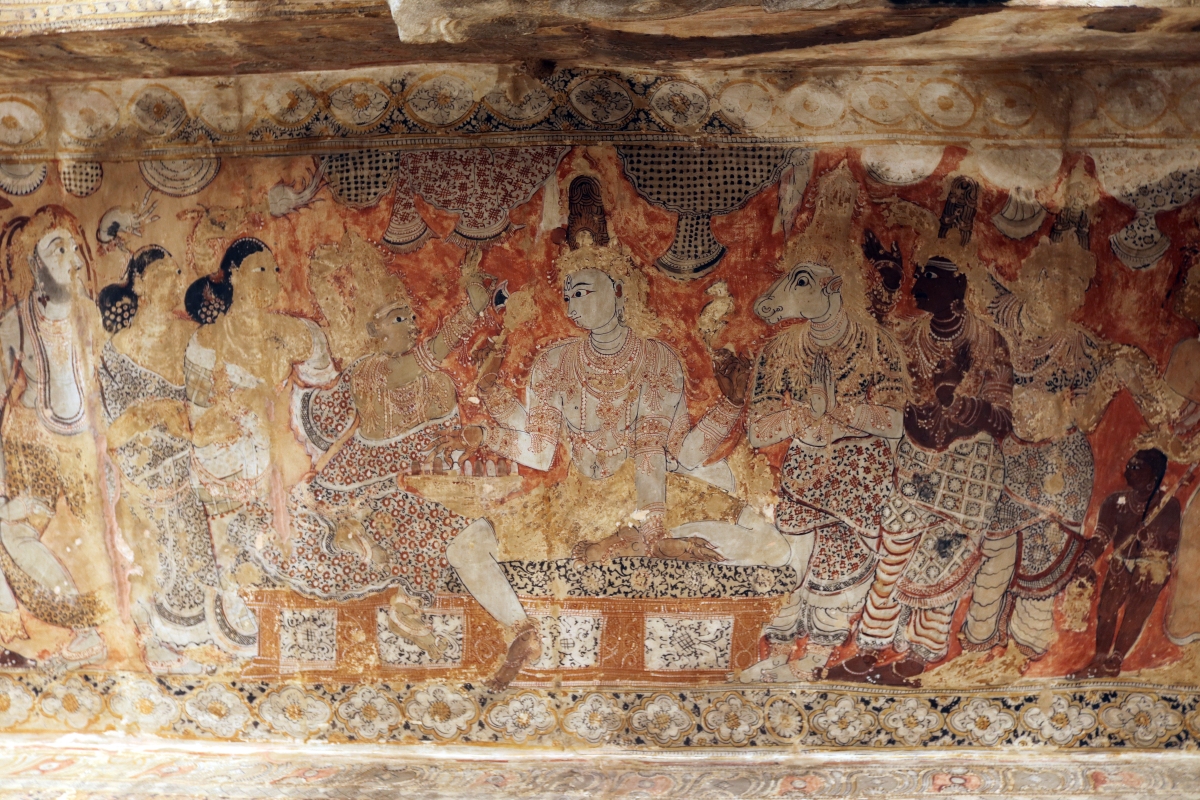
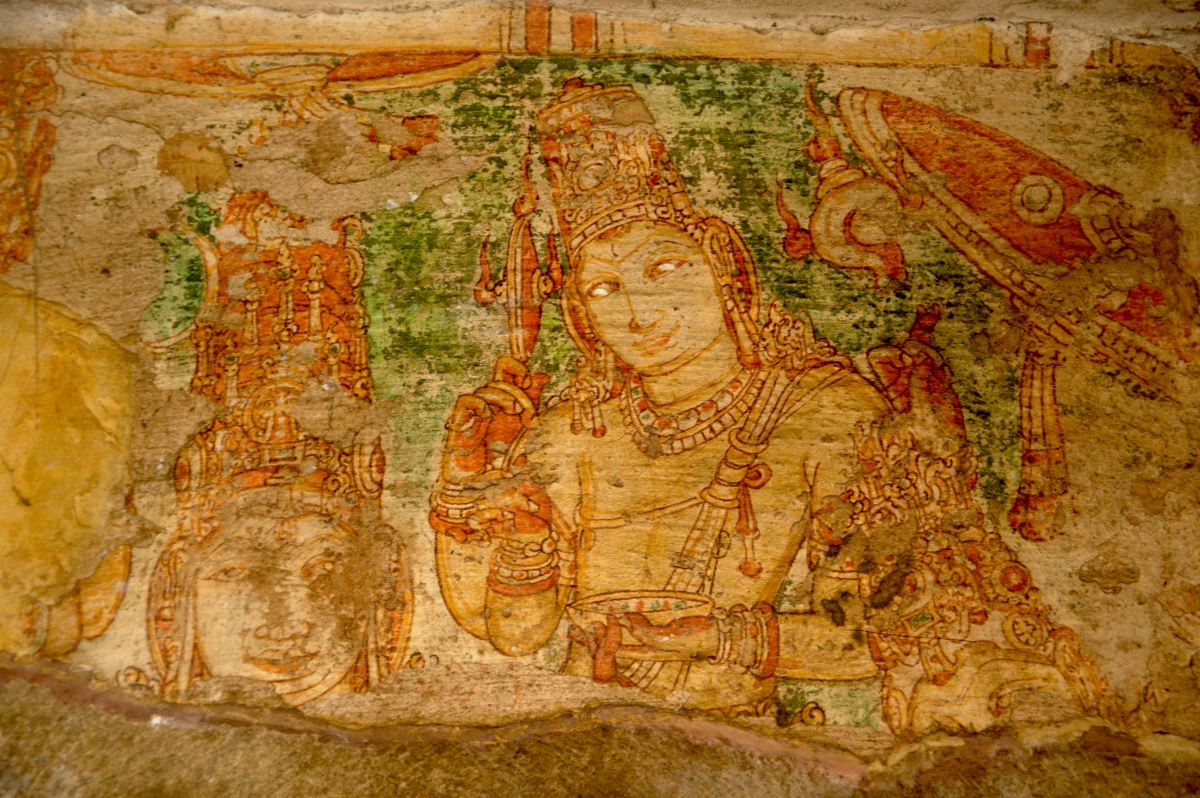
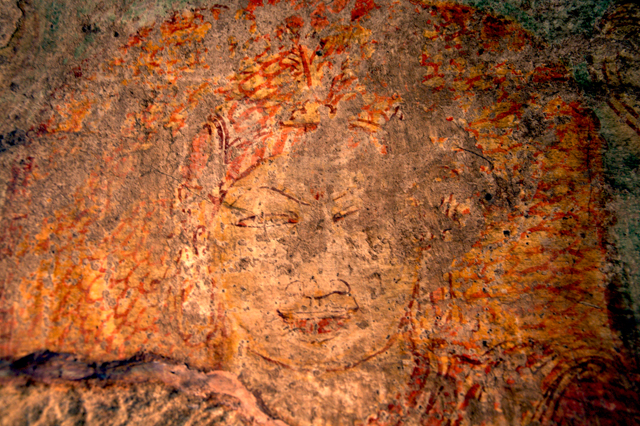
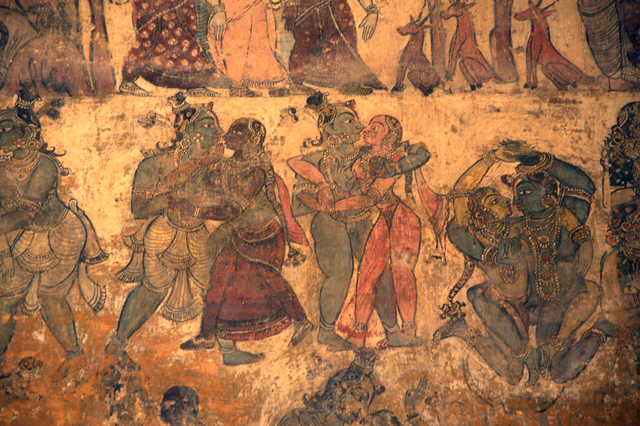
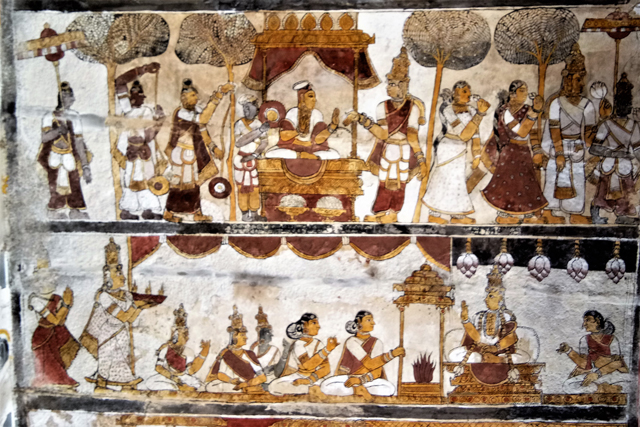
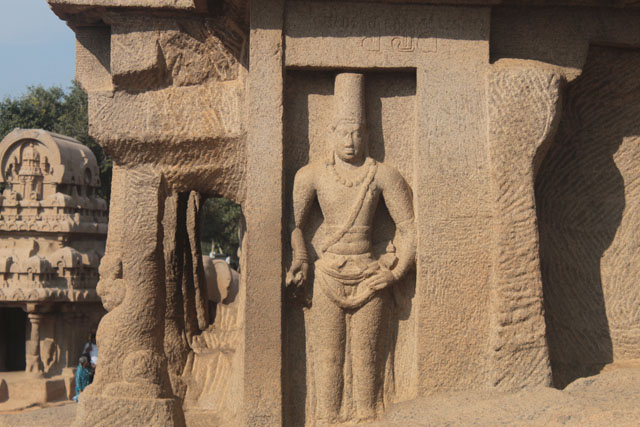
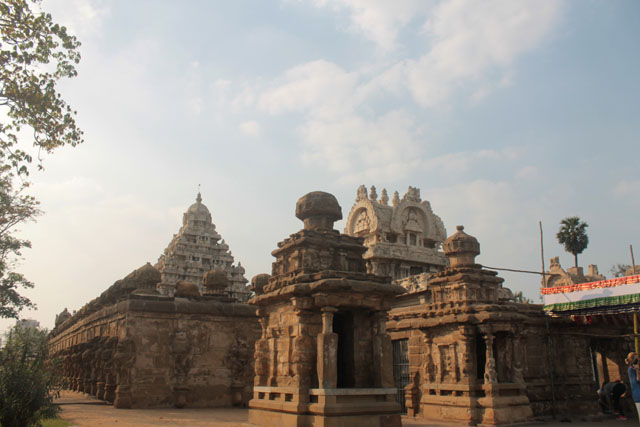


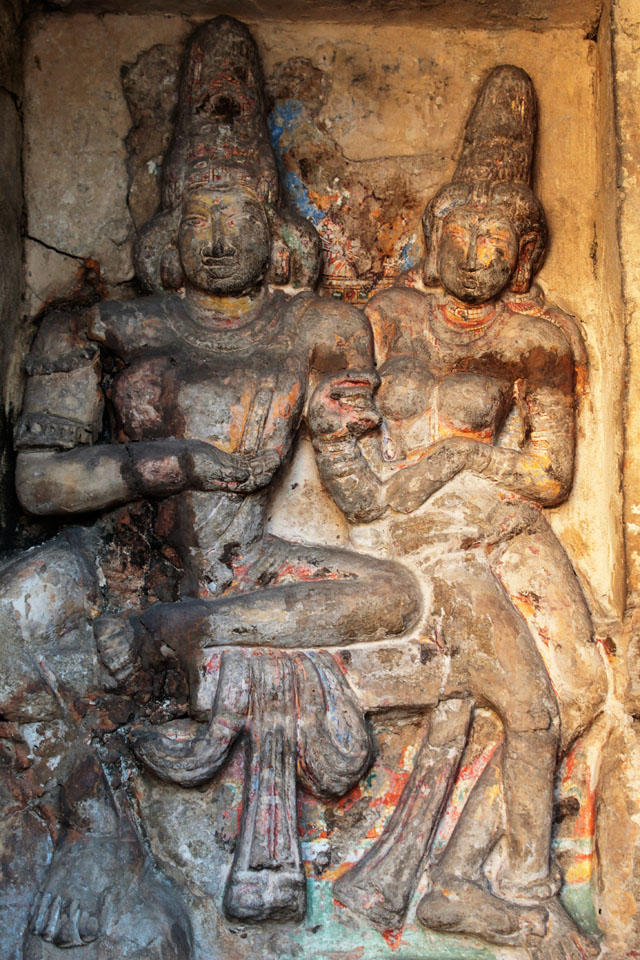
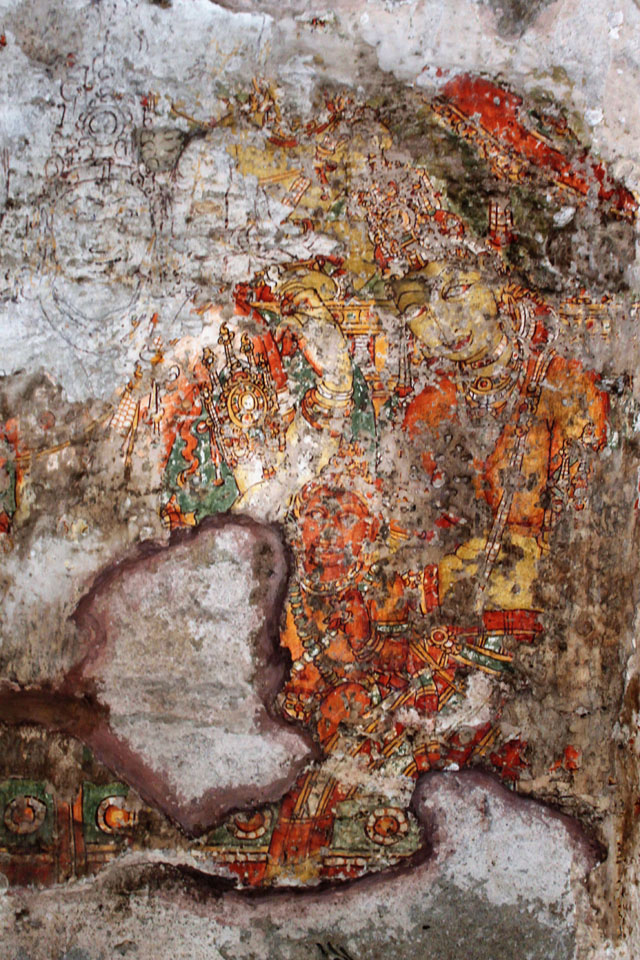

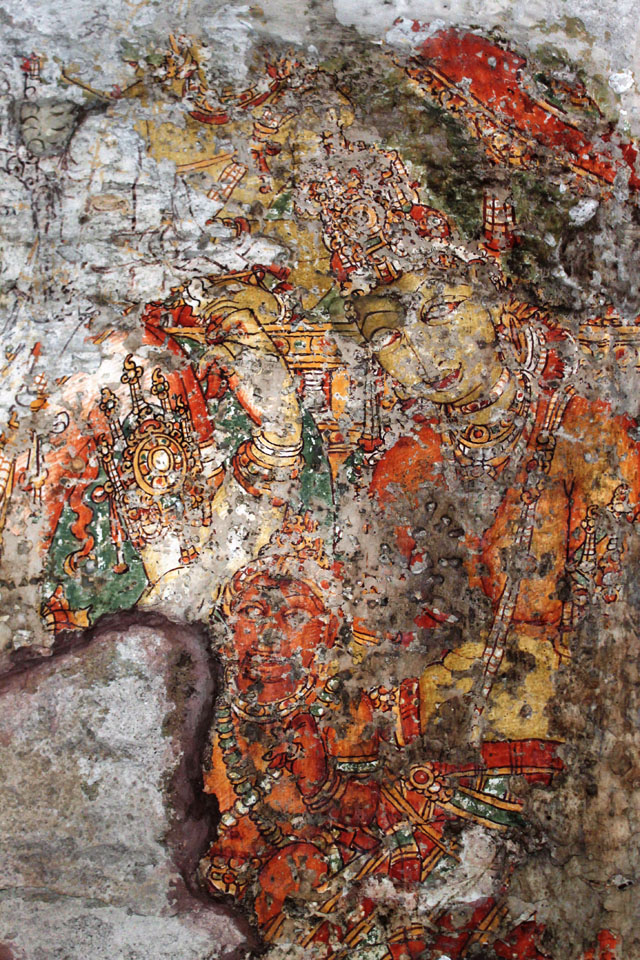
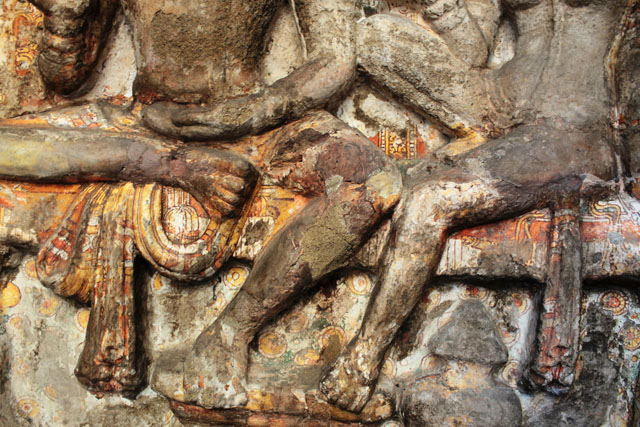
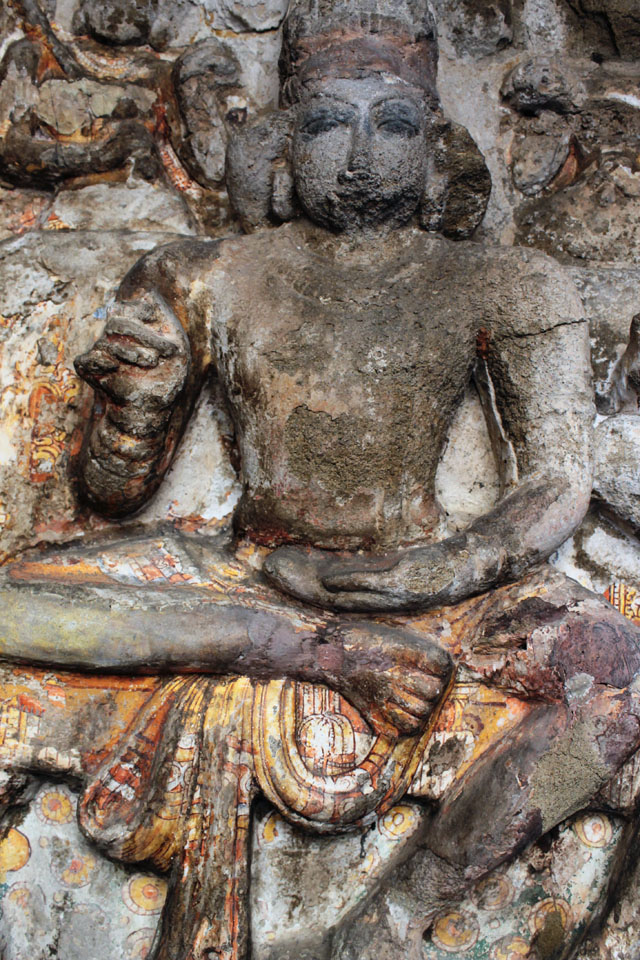
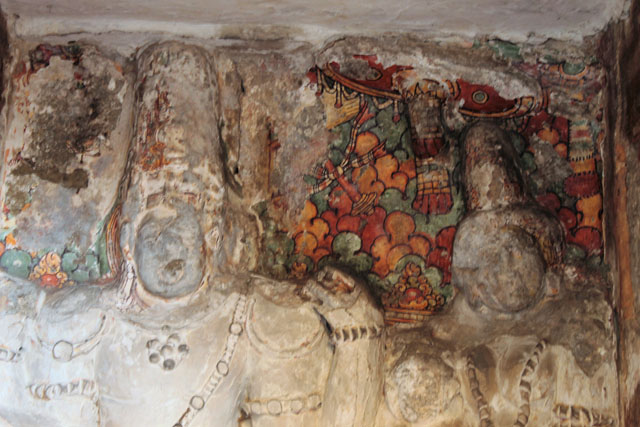
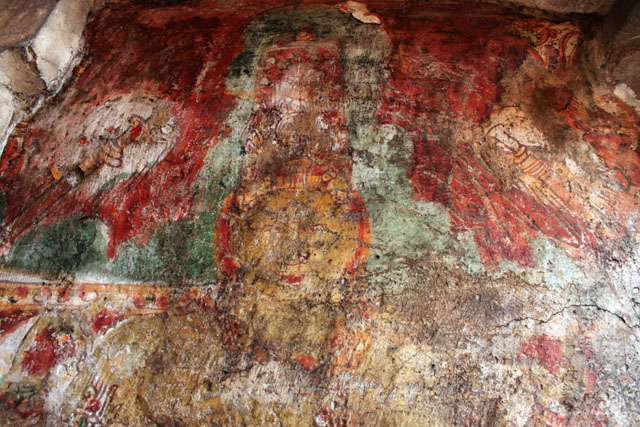
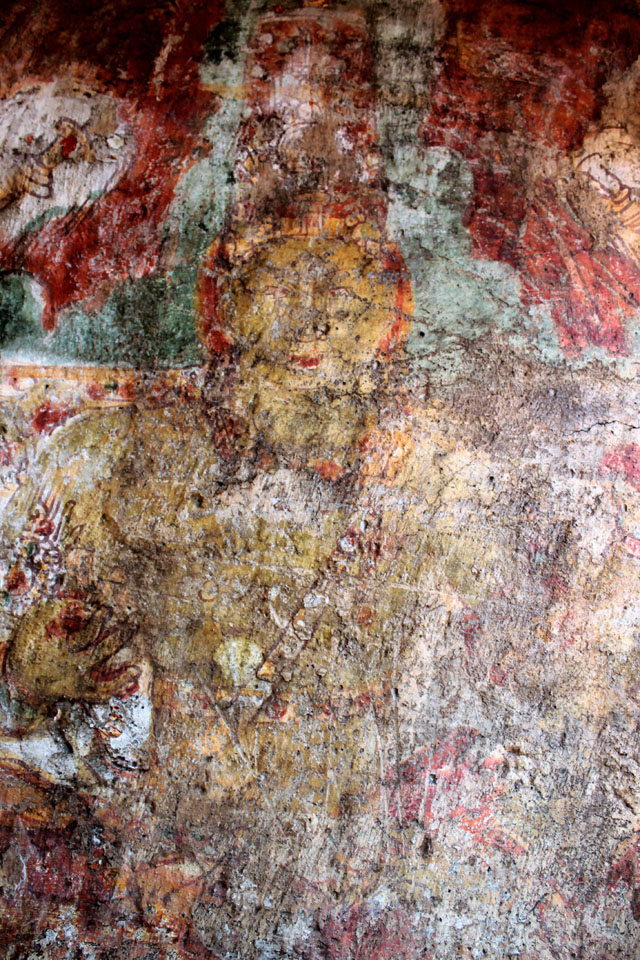
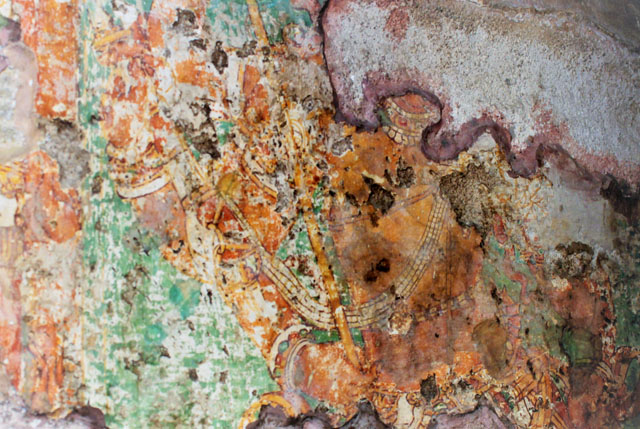

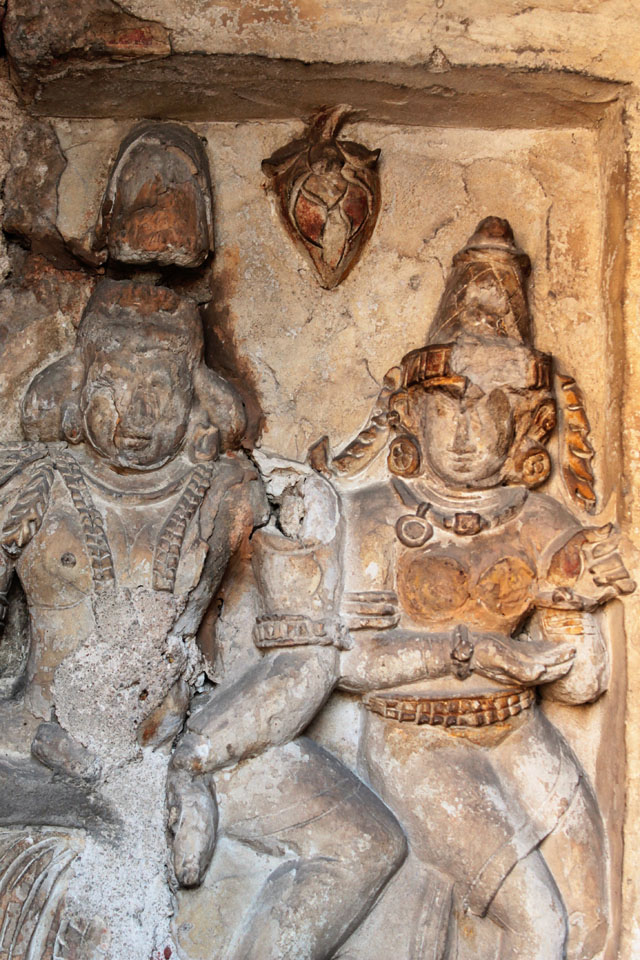

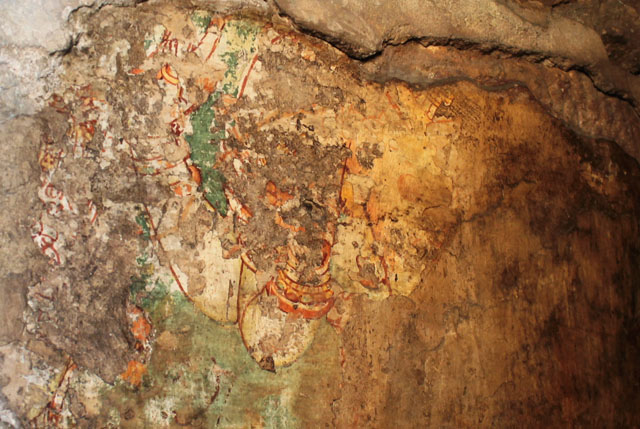

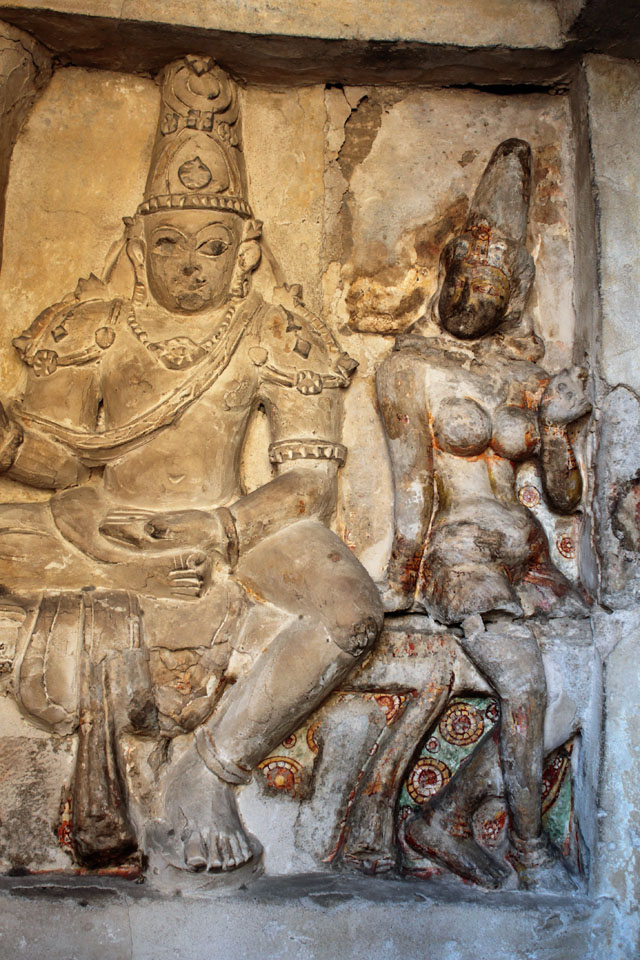



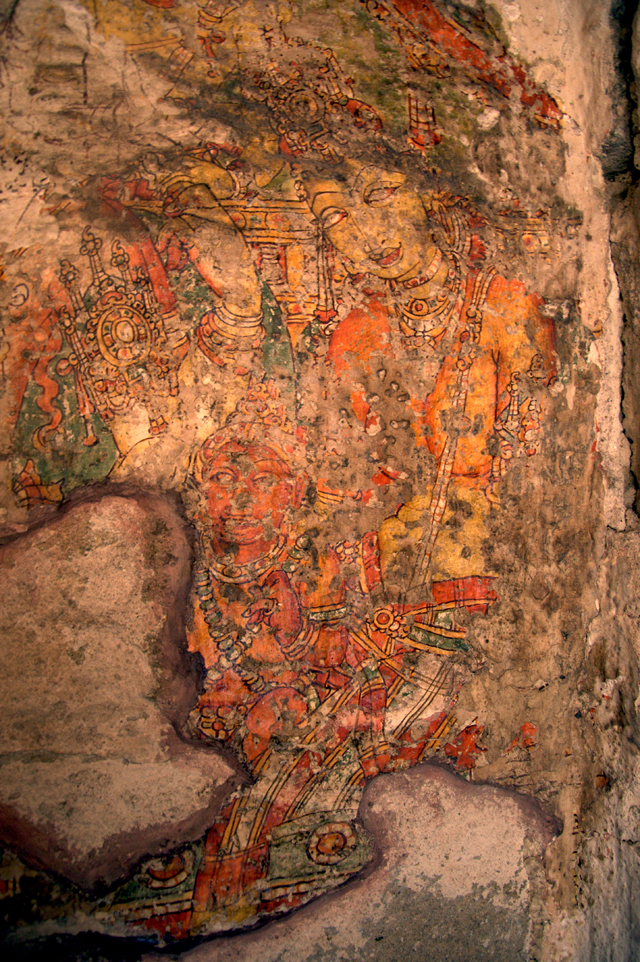
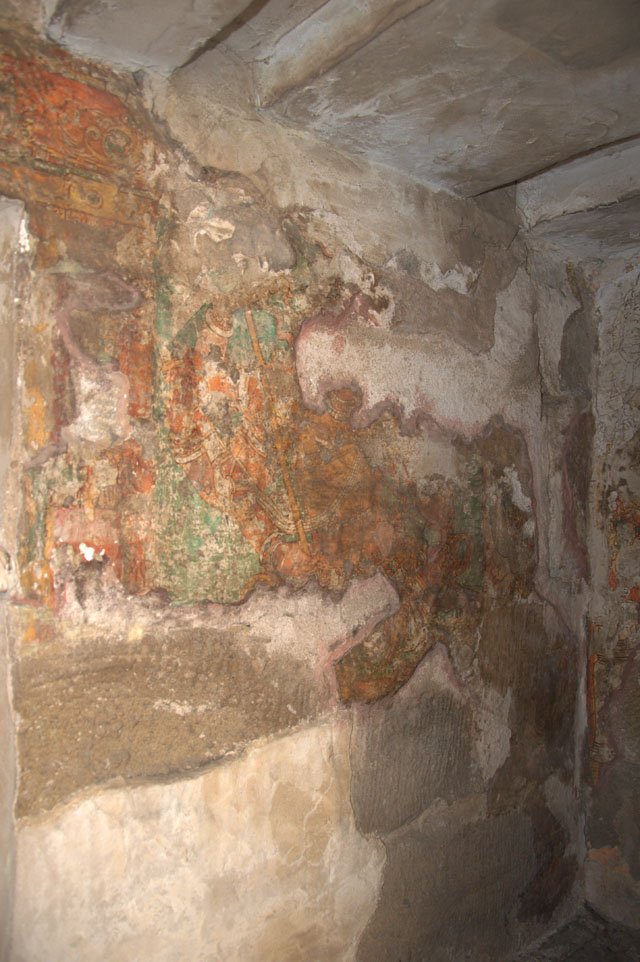



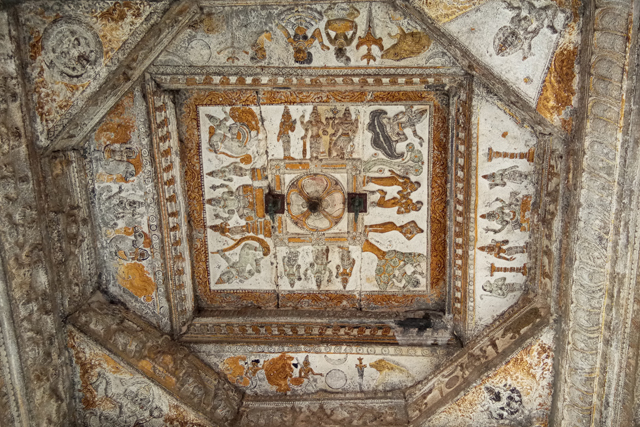
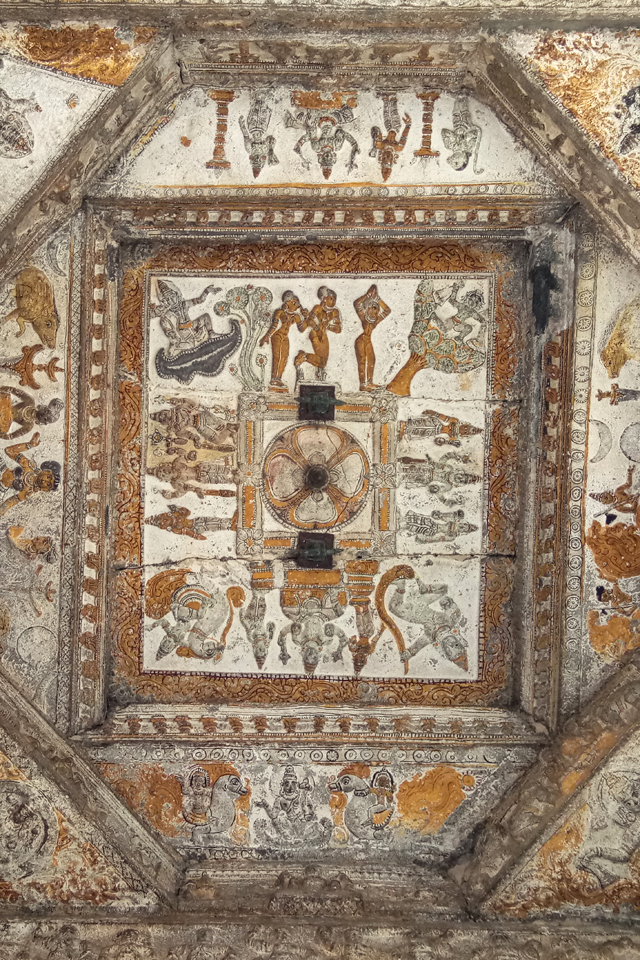

![_DSC0106[955]](https://blogvirasatehind.files.wordpress.com/2018/11/dsc0106955.jpg?w=840)
